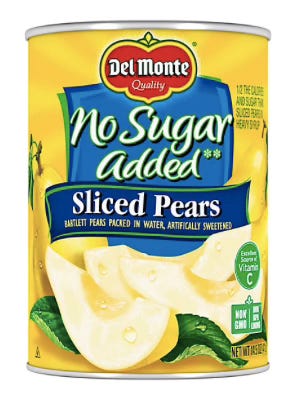UPDATED: June 20, 2025
Welcome to the Healthy Living Is Good Medicine Newsletter, a totally free, health education publication covering a wide variety of topics with original articles intended to help people lead healthier and more fulfilling lives.
Taste: It’s Personal
The tastes that we find most pleasing are partly due to our genetics, and partly due to learning from our past experiences; it’s both nature and nurture. Unfortunately, our taste perceptions have been hijacked by the industrially processed and chemically manipulated foods that dominate grocery store shelves, along with restaurant foods intended to produce cravings that will keep us coming back for more. This has resulted in a detrimental reprogramming of our taste preferences.
Unfortunately, dining out more than twice a week can be dangerous for one’s health. Dr. Ben Jones explains how, and suggests healthier alternatives:
While our prehistoric ancestors needed a diet with salt, sugar, and fat in order to survive, modern humans consume them in excess, and we are paying the price. Diseases such as obesity, type 2 diabetes, non-alcoholic fatty liver disease, and cardiovascular disease leading to heart attacks and strokes, are now rampant. An unhealthy diet has also been linked to a number of different types of cancer.
Eating for Pleasure
Eating for stress relief, out of boredom, or as a source of pleasure is a slippery slope that can pave the way to junk-food addiction. I brought up some of the challenges to overcoming this tendency in my article about obesity and weight loss:
Not only are the health consequences tremendously harmful for individuals, they also have a grave economic impact on society as a whole. Eating some unhealthy foods can cancel out the benefits gained from a healthy diet. If you let your taste buds determine your food choices, it will be nearly impossible to make those choices healthy ones.
Hyper-palatable foods (HPF) are addictive, super-tasty junk foods that are related to ultra-processed foods (UPFs). They have poor nutritional value, and contain many ingredients that don’t deserve to be in your body. Developed by tobacco-owned food companies, HPFs have had a huge adverse effect upon the quality of the U.S. diet, according to a recent analysis by the Department of Agriculture. We are now drowning in a sea of pseudo-foods engineered to induce sustained eating. The TrueFood database can help us avoid UPFs.
The main reason that UPFs and HPFs are so bad for us is that they make us overeat things with little or no nutritional value. Manufacturers have engineered their cravability, and the healthier alternatives may just not taste as good. Breaking the craving for UPFs needs to start in childhood, especially since so many of those products are aimed at children. For more about the nefarious manipulation of our sense of taste, check out Dr. Wilson’s deep dive into the subject:
Here’s an example of how the food industry is perfectly willing to feed us chemicals if it makes them richer: The label says, “No Sugar Added.” The Ingredients List on the back of the can shows that the product has been sweetened with High Fructose Corn Syrup (HFCS). I’d rather have added sugar (which is half fructose) than a chemical intended to hook our sweet tooth and make us overeat. Pears are already delicious, without a need for any sweetener.
The best way to fight back against the deliberate manipulation of our sense of taste is to make rational food choices based upon nutritional qualities, rather than taste. We need to get into the habit of reading the Ingredients Lists every single time we intend to purchase a new packaged food item!
We may first have to learn to love the tastes of real foods that are actually good for us. Like any addiction or ingrained bad habit, eating for pleasure presents a serious challenge that needs to be overcome. The good news is that it can be accomplished much less painfully and far less dangerously by going “cold turkey” than it does to kick alcohol, tobacco, and opioid addictions.
Overcoming Temptations
The vast majority of the shelf space in supermarkets and grocery stores is taken up by foods intended to appeal to our sense of taste, rather than our need for good nutrition. Just look at the section with the breakfast cereals if you want to see a glaring example. Out of all those choices, there are maybe only a couple that are made from whole grains and don’t have added sugars.
Watch any of the cooking competitions featured on TV and you’ll see that the contestants’ dishes are judged mostly on taste. There is absolutely no weight given to nutritional value, and there is no incentive for the competing chefs to use healthier ingredients. The message is loud and clear: When it comes to eating, it’s your immediate pleasure that counts, not the health consequences that occur later.
Because of this pervasive social mentality, it is up to us as individuals to stop eating for pleasure and reprogram of sense of taste to prefer food that nourishes us. We really can train our brains to prefer healthy foods that are both delicious and nutritious. That typically begins with weaning ourselves off prepared foods, regardless of their source. Be wary of any ready-to-eat or heat-and-eat food items, and scrutinize all ingredients labels. Anything foods that are packaged are suspect.
Using a Food Compass
Researchers at the Tufts University Friedman School of Nutrition Science and Policy are using a nutrient profiling algorithm called “Food Compass” that scores food choices on their estimated health impact. Still a work in progress, Food Compass is the first major nutrient profiling system to use a consistent scoring system across diverse food groups, including mixed dishes.
The Food Compass Score (FCS) ranges from 100 (best) to 1 (worst). It provides a metric for food quality, but does not take the quantity consumed into account. I recommend that the FCS be used in conjunction with Glycemic Load (GL) data. Although dried fruits were given a high FCS, they have a high glycemic load and should be avoided by people at risk for developing type 2 diabetes.
Foods and beverages scoring 31-69 should be consumed in moderation. Anything scoring 30 or lower should be consumed minimally, if not avoided entirely. The highest scoring categories were vegetables (an average FCS 69.1), fruits (an average of FCS 73.9, with nearly all raw fruits receiving a FCS of 100), and legumes, nuts, and seeds (an average FCS 78.6). Starchy vegetables scored an average FCS of 43.2.
Interestingly, the average FCS for beef was 24.9; for poultry, 42.67; and for seafood, 67.0. Among beverages, the average FCS ranged from 27.6 for sugar-sweetened sodas and energy drinks, to 67 for unsweetened fruit or vegetable juices. The lowest scoring category was snacks and sweet desserts (an average FCS 16.4).
Check out the Food Compass Score comparisons within food categories to guide your future food choices. The study compiled a complete database for 8,032 unique foods and beverages. It can be found in the study’s Supplementary Information section. Open the link and scroll down until you reach Table 7.
Doing Without Sweets
Although I recommended natural, low- or no-calorie sweeteners, such as stevia extract and monk fruit extract, as sugar substitutes for those who have or are at risk for diabetes, long-term safety profiles and acceptable daily intakes for these substances do not exist. A better strategy is for people to get over their craving for intense sweetness by eliminating both sugar and sweeteners, along with dried fruits, thereby “resetting” their sense of taste.
I suggest that you begin by forgoing all commercially produced beverages, with the possible exception of tomato juice. Sugar-sweetened drinks, those containing artificial sweeteners such as diet sodas, fruit juices, bottled teas, and energy drinks have replaced drinking water, much to our detriment. The healthiest beverage you can drink is plain, unadulterated water, preferably from the tap. Unsweetened tea or coffee comes in second.
Skip Desserts
We have been programmed to believe our dinner is incomplete if we don’t have a sweet dessert to polish off the meal. However, any dessert that reinforces our craving for sweets can’t be considered good for us, no matter how healthy it is claimed to be. Just because it is alleged to fall under the Mediterranean diet doesn’t give it a free pass. A much better way to signify that the meal has come to an end is with some fresh fruit, and perhaps a little cheese and some tree nuts.
If you simply must have a tiny treat to finish off a meal, you might try eating a small piece of dark chocolate that’s at least 85% cocoa. A recent RCT involving 48 healthy young adults showed that 85% cocoa had prebiotic effects, resulting in a restructuring of the diversity and abundance of intestinal bacteria. Cocoa is also high in polyphenols, with antioxidant properties that may help protect against heart disease, cancer, and some neurodegenerative diseases.
Cocoa may also act as a mood elevator, possibly acting via the gut-brain axis, since there was a statistically significant improvement among those who ate 10 grams, three times a day, of the 85% dark chocolate for three weeks, but not in the control group or those who ate 70% cocoa chocolate. Although this study had some limitations, my motivated reasoning makes me want it to be true that, at least for my microbiome, 85% dark chocolate is a healthy food.
There is, however, a “dark side” to dark chocolate: Lead, cadmium, and arsenic are common contaminants. Consumer Reports found that about a third of chocolate products, including brownie mixes, chocolate chips, and hot cocoa, contained concerning levels of these heavy metals. A new study found that organic chocolate products were significantly more likely to demonstrate higher levels of both cadmium and lead.
While that may not pose an appreciable risk for the average adult when consumed as a single, one-ounce serving, products with the highest levels, when eaten as more than one serving per day and in combination with other sources of heavy metals, may add up to exposures that exceed the proposed safe limits. However, these findings are nuanced, and some would say that there’s no reason to worry.
Overcoming Salt Cravings
Our bodies need a certain amount of salt for proper functioning and to maintain fluid balance. While too little dietary salt can cause problems, most Americans consume far too much of it. Over time, excessive salt intake can damage the heart, blood vessels, kidneys, and brain.
Other than some diseases that produce an adrenal insufficiency or kidney disorder, stress, boredom, lack of sleep, hunger, or premenstrual syndrome (PMS) can contribute to salt cravings. Loss of sodium through excessive perspiration or taking some diuretics can result in craving salt. So can the habit of adding salt to everything.
If you have the self-discipline to stop eating salty snacks, you are well on your way to rehabilitating your taste for salt. However, if you find the no potato chips or pretzels challenge daunting, there are other approaches to gradually reducing your salt intake and overcoming your cravings.
DIY Rehab
When it comes to rehabilitating your taste buds, I’m not aware of any residential treatment programs that you can check yourself into for a month. I suppose this could be a potential business opportunity for some bold entrepreneurs. For now, if you want your food and beverages to be as healthy as possible, you’ll need to make them yourself.
One of the sliver linings of the COVID-19 pandemic was that my favorite restaurants were closed, so I got involved in cooking Mexican, Japanese, Chinese, Thai, and Indian dishes at home. I began by choosing the healthiest ingredients I could find. Being far more interested in eating than in cooking, I tried to simplify the process as much as possible, and the first thing I discovered was that carefully measuring ingredients wasted a lot of time.
Recipe books and online resources make it sound like ingredient quantities are critical, but my kitchen isn't a chemistry lab, and if I don't get the amounts just right, nothing is going to blow up. Except for baking, eyeballing quantities seems to work out well, but one does have to be more careful when it comes to seasoning.
By using seasonings very sparingly, my home cooking experiments soon revealed the presence of the delightful, subtle flavors possessed by whole, natural foods. Freshly ground black pepper, perhaps the world’s most popular spice, and cinnamon, are now my go-to seasonings. You will not find a salt-shaker on my dinner table. I grow my own dill, oregano, rosemary, basil, and peppermint. Balsamic vinegar is a pantry staple.
I consider recipes at best to be sources of inspiration for my own cooking experiments, and their seasoning recommendations often add unnecessary complexity. People's tastes are very individual, due to genetics and prior food experiences. What tastes good to one person may not be so pleasant for another. There is no way that the seasonings in a recipe can please all of the people, all of the time. For example, some people simply hate the taste of cilantro (coriander) due to their genetic makeup.
Getting Creative in the Kitchen
With my newfound sense of freedom to experiment and innovate, I decided to explore what plain, unseasoned food really tasted like. So, I progressively cut back on all seasonings. Much to my surprise and delight, allowing the food's natural flavors to shine through opened up a whole new world of taste enjoyment. Once I had rehabilitated my taste buds by avoiding salt, sugar, and saturated fats as much as possible, I discovered that the subtle flavors of natural, healthy ingredients were absolutely wonderful on their own.
I selected foods that I knew were good for me, while avoiding those that I knew weren't. That helped me develop a more refined sense of smell and taste, the two of which actually work together to create our perception of taste. What I quickly learned is that if something isn't palatable without a heavy dose of seasoning, it's probably not worth eating at all.
At the turn of the 20th century, spoilage was a common problem when perishable foods were transported and stored without the benefit of refrigeration. “Ketchup” was the generic term for any product used to hide the taste of spoiled meat. In 1907, the H.J. Heinz Company cornered the ketchup market by lobbying the U.S. government to shut down its competitors.
Today, Heinz Tomato Ketchup is a UPF containing “tomato concentrate, distilled vinegar, high fructose corn syrup, corn syrup, salt, spice, onion powder, and ‘natural flavoring,’ which includes oleoresins, essential oils, and spice extracts.” Now, the thought of putting ketchup on any food seems like putting lipstick on the Mona Lisa. As the saying goes, “If it ain't broken, don't fix it.”
Sadly, the last time I checked, two tablespoons of ketchup counts as a serving of a “vegetable” in school lunches, thanks to congressional lobbying efforts and campaign contributions to politicians by big food corporations. It's the same old, ruthlessly capitalistic theme of people being poisoned for profit. When will American consumers finally wake up and scream, “I'm mad as hell and I'm not going to take it anymore!”?
A Simple Meal Plan for Taste Bud Rehab
For my day-to-day meals, I like to keep things super-simple. If I can make a healthy, tasty meal that's served in a single bowl, time spent preparing food and cleaning up afterward is kept to a minimum. I focus on lean protein and dietary fiber, and like to combine whole grains and legumes. For breakfast, I then add a fermented dairy product, such as yogurt or kefir to boost the protein content.
For lunch, I’ll include some seafood, or perhaps some chicken or turkey breast, and some fresh or frozen whole vegetables, especially brassicas, eaten raw or cooked. Garlic, onions, celery, and cooked mushrooms are commonly included. Supper is based around a salad with fresh greens, tomatoes, avocado, carrots, and cheese. I only use extra-virgin olive oil (EVOO) for cooking and salad dressings.
Most meals will include some fresh whole fruits, especially berries and citrus, for their micronutrients and additional fiber. Seeds and tree nuts add healthy fats and add to the variety of flavors. I consider myself to be a plant-leaning omnivore:
Discovering the wonderful taste of foods with little to no flavoring from sugars, salt, and saturated fats did take some time, but for me it has been well worth it. I can consistently, and with little effort, turn out meals that are tasty and packed with nutrients. I have also saved a ton of money by not dining out.
Coming up with new recipes and exercising my culinary creativity has made time spent in the kitchen a whole lot more fun. I've even written a book about my cooking adventures and my quick-and-easy approach to healthy eating, and am now working on its second edition. I’ll let you know when it is published.
― ― ―
This Post can be updated at any time. Please check back here again to find the most up-to-date information.
Find a lot more of my articles about Healthy Living in my Post Archive.
Share my Website Link with others via your social media accounts. Please encourage people who follow you to subscribe to my totally free Newsletter, and help them become much healthier.








